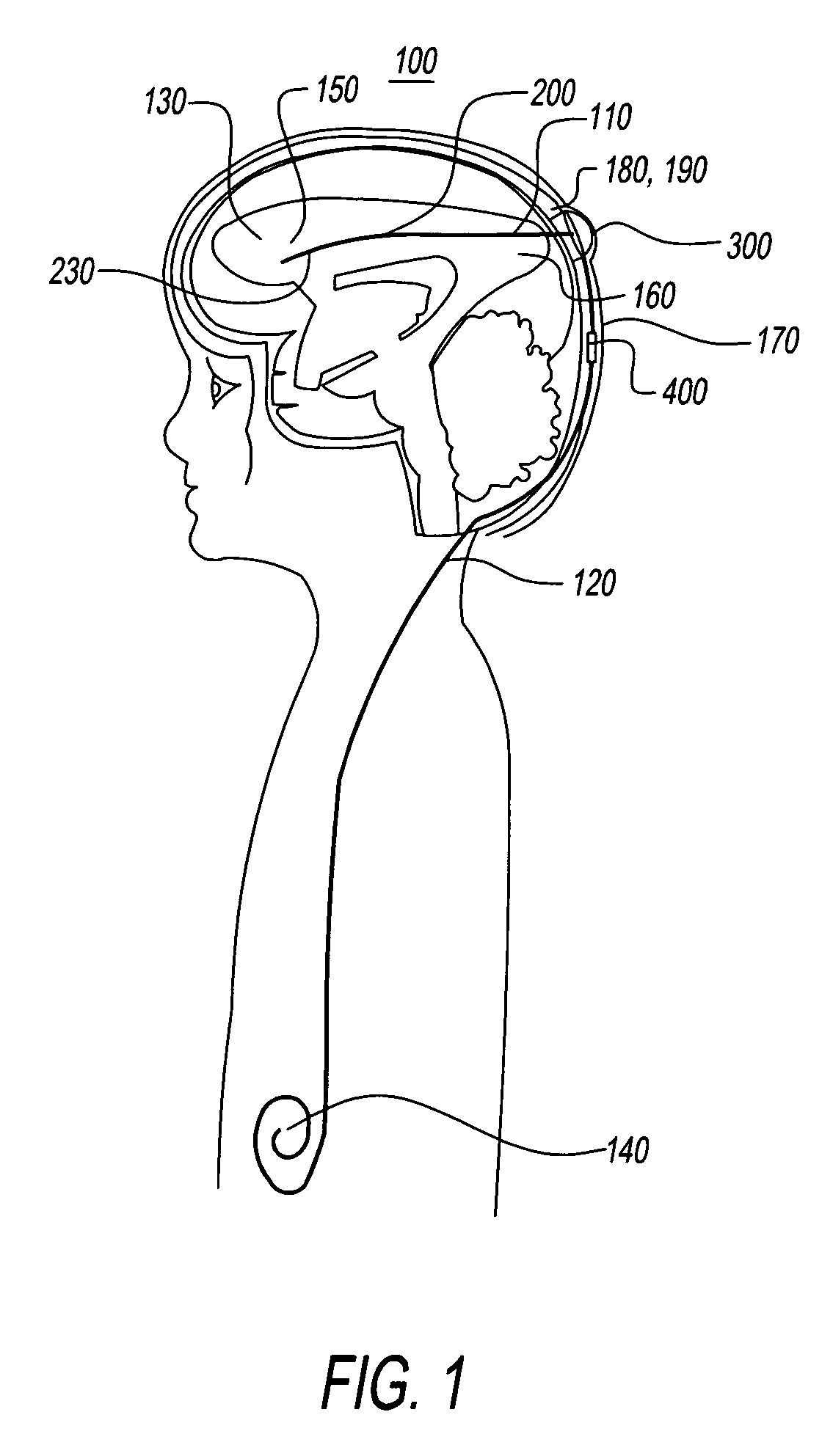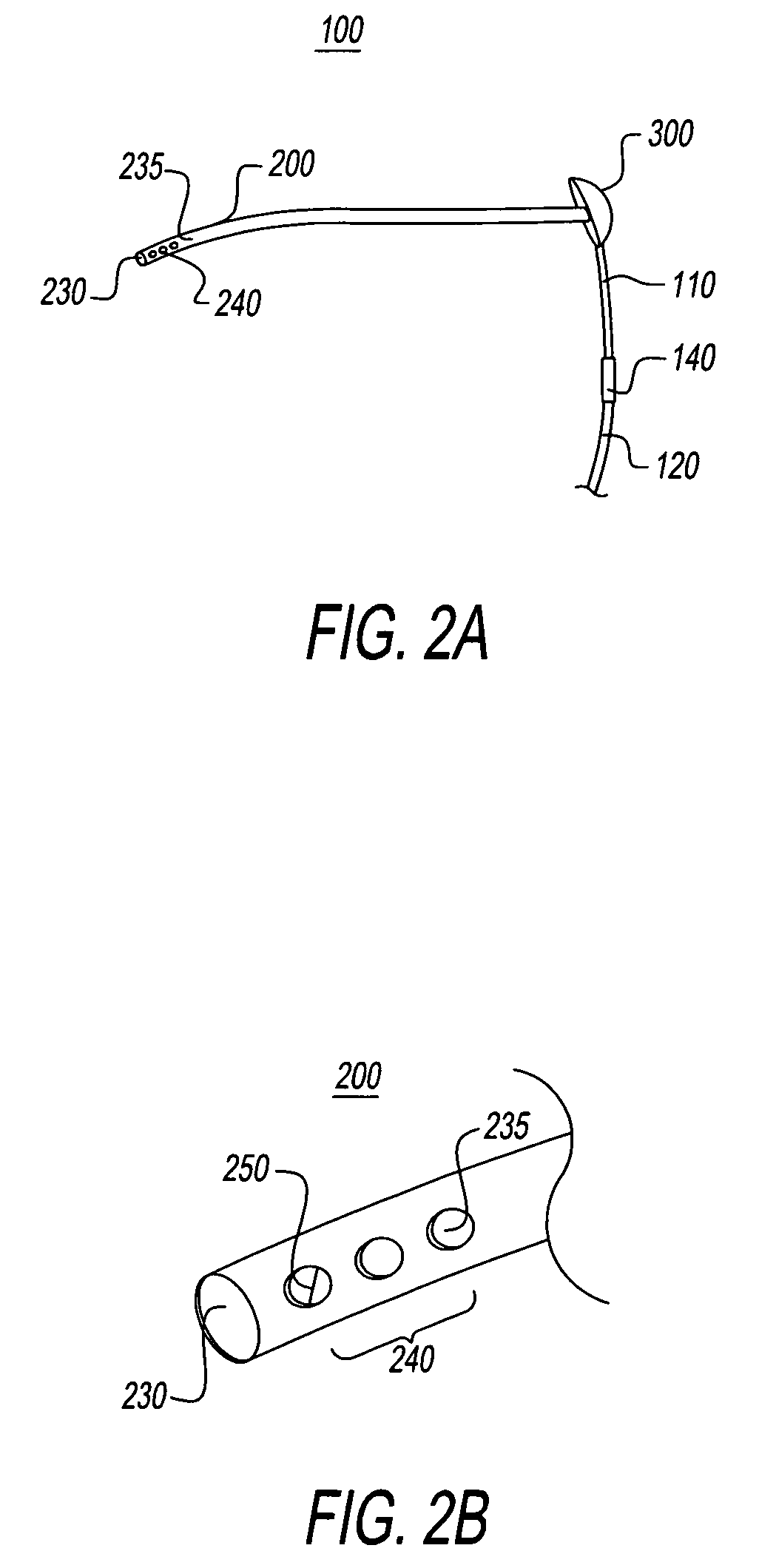No clog shunt using a compact fluid drag path
a fluid drag path and fluid management technology, applied in the field of medical devices, can solve the problems of increasing pressure on the brain, obstruction of the system, enlargement of the ventricle, etc., and achieve the effect of reducing clogging
- Summary
- Abstract
- Description
- Claims
- Application Information
AI Technical Summary
Benefits of technology
Problems solved by technology
Method used
Image
Examples
Embodiment Construction
[0054]FIG. 1 shows medical apparatus 100, with shunt 110, shunt tube 120, shunt proximate end 130, shunt distal end 140, organ 150, skull 160, skin 170, extracranial space 180, subcutaneous space 190, catheter 200, catheter tip 230, extracranial filter 300, additional component 400. The organ may be any organ that requires fluid control, but in a preferred embodiment the organ is a brain or an eye, and the fluid being controlled is CSF, or cerebrospinal fluid. The catheter 200 may be a ventricular catheter, and the organ may be a human brain. Alternately, the organ may be a human eye.
[0055]FIG. 1 illustrates how the invention may be used to drain CSF from the brain, and how shunts of the prior art have been improved in this invention. The shunt catheter 200 extends from the organ 150 to the outside of the skull 160, where it enters an extracranial filter 300. The extracranial filter 300 lies just under the skin 170, where it is relatively easy to access. The shunt tube 120 then exte...
PUM
 Login to View More
Login to View More Abstract
Description
Claims
Application Information
 Login to View More
Login to View More - R&D
- Intellectual Property
- Life Sciences
- Materials
- Tech Scout
- Unparalleled Data Quality
- Higher Quality Content
- 60% Fewer Hallucinations
Browse by: Latest US Patents, China's latest patents, Technical Efficacy Thesaurus, Application Domain, Technology Topic, Popular Technical Reports.
© 2025 PatSnap. All rights reserved.Legal|Privacy policy|Modern Slavery Act Transparency Statement|Sitemap|About US| Contact US: help@patsnap.com



